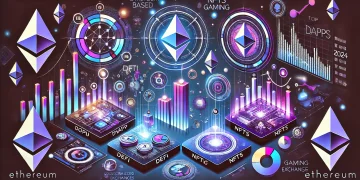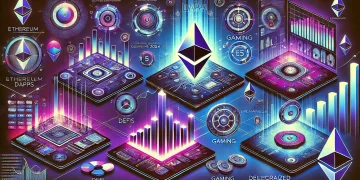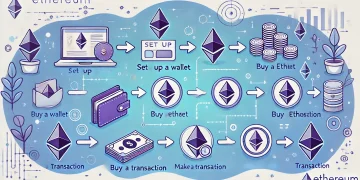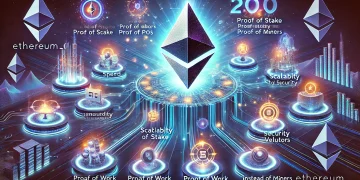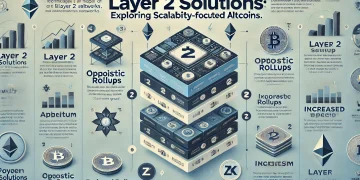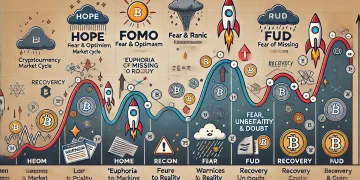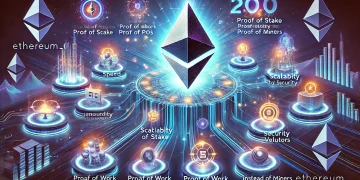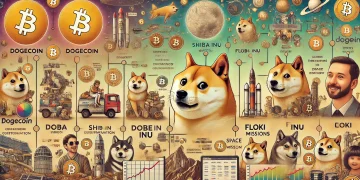In the evolving landscape of blockchain technology, Cosmos (ATOM) has emerged as a pioneering force in solving one of the industry’s most pressing challenges: interoperability. Often referred to as the “Internet of Blockchains,” Cosmos is revolutionizing how different blockchain networks communicate and interact with each other, creating an interconnected ecosystem that promises to reshape the future of decentralized technology.
Understanding Cosmos and Its Vision
Cosmos represents more than just another blockchain platform; it embodies a comprehensive vision for the future of distributed systems. At its core, Cosmos aims to create an ecosystem where thousands of decentralized networks can communicate, share data, and transact with each other seamlessly. This vision addresses the fundamental limitation of early blockchain networks: their inability to interact with one another effectively.
The project’s architecture is built around the idea that the future of blockchain technology lies not in a single dominant chain, but in a network of interconnected, specialized blockchains that can each serve specific purposes while maintaining their sovereignty. This approach has proven particularly attractive to developers and enterprises looking to build custom blockchain solutions without sacrificing interoperability.
The Technical Foundation: Tendermint and IBC
The technical architecture of Cosmos rests on two primary pillars: the Tendermint consensus engine and the Inter-Blockchain Communication (IBC) protocol. Tendermint provides a robust, Byzantine Fault Tolerant (BFT) consensus mechanism that enables secure and efficient network operation. This foundation allows developers to focus on application logic rather than the complexities of blockchain networking and consensus.
IBC represents a groundbreaking protocol that enables different blockchains to communicate and transfer assets securely. This protocol establishes standardized methods for blockchains to verify and process transactions from other networks, creating a true internet of blockchains. The implementation of IBC has opened up new possibilities for cross-chain applications and services.
ATOM Token: The Backbone of the Cosmos Network
The ATOM token plays a crucial role in the Cosmos ecosystem, serving multiple purposes beyond simple value transfer. As the native token of the Cosmos Hub, ATOM is used for staking, governance, and securing the network. Holders can participate in network validation by delegating their tokens to validators, earning rewards while contributing to network security.
Governance rights associated with ATOM tokens enable holders to participate in crucial decisions about the network’s future. This democratic approach to network management ensures that the ecosystem evolves according to the community’s needs and preferences, while maintaining stability and security.
The Cosmos SDK: Empowering Developers
The Cosmos Software Development Kit (SDK) has revolutionized blockchain development by providing a modular framework for creating custom blockchain applications. This toolkit enables developers to build sovereign blockchains that can automatically interact with other networks in the Cosmos ecosystem, significantly reducing the complexity and time required to launch new blockchain projects.
By offering a standardized development framework, the Cosmos SDK has fostered the growth of a diverse ecosystem of specialized blockchains. From decentralized finance (DeFi) platforms to gaming networks, developers are leveraging the SDK to create innovative applications that benefit from interoperability with the broader Cosmos network.
Real-World Applications and Adoption
The practical applications of Cosmos technology extend across various industries and use cases. Major projects have already adopted Cosmos technology to build specialized blockchains, including Binance Chain, which uses Tendermint consensus, and the Terra network, which leverages the Cosmos SDK for its stability and scalability.
These implementations demonstrate the versatility of Cosmos technology in supporting different types of blockchain applications. From payment systems to decentralized exchanges, the ability to create purpose-built blockchains that can interact with a broader ecosystem has proven valuable for numerous projects.
The Cosmos Hub and Zone Architecture
The architecture of Cosmos introduces the concept of Hubs and Zones, where the Cosmos Hub serves as a central connection point for various independent blockchains (Zones). This design allows for efficient routing of transactions between different networks while maintaining their autonomy. The Hub-and-Zone model has proven particularly effective in managing cross-chain communication without requiring every blockchain to maintain direct connections with all others.
This architectural approach also provides important security benefits, as potential issues in one Zone are contained and don’t affect the broader network. The Cosmos Hub acts as a secure intermediary, facilitating reliable communication while maintaining the independence of connected chains.
Impact on the Blockchain Industry
Cosmos has significantly influenced the blockchain industry’s approach to scalability and interoperability. The platform’s success has demonstrated the viability of a multi-chain future, where specialized blockchains work together to create a more efficient and scalable ecosystem. This has inspired other projects to adopt similar approaches to blockchain architecture and development.
The emergence of the Cosmos ecosystem has also contributed to the evolution of blockchain business models, enabling new forms of collaboration and value exchange between different networks and applications. This has particular relevance for enterprise adoption, where organizations often require specialized blockchain solutions that can still interact with broader networks.
Frequently Asked Questions
What makes Cosmos different from other blockchain platforms?
Cosmos stands out through its focus on interoperability and its modular approach to blockchain development. The platform enables the creation of sovereign blockchains that can communicate seamlessly while maintaining their independence.
How does ATOM token staking work?
ATOM holders can stake their tokens by delegating them to validators, earning rewards while helping secure the network. The staking mechanism uses a Proof-of-Stake consensus model that promotes network security and decentralization.
What is the Inter-Blockchain Communication (IBC) protocol?
IBC is a standardized protocol that enables different blockchains to exchange data and assets securely. It establishes the rules and methods for cross-chain communication within the Cosmos ecosystem.
Can existing blockchains integrate with Cosmos?
Yes, existing blockchains can integrate with Cosmos through various methods, including building bridges or adapting their architecture to use Cosmos technology. The flexibility of the Cosmos SDK facilitates different approaches to integration.
How does governance work in the Cosmos ecosystem?
Governance in Cosmos operates through a democratic system where ATOM holders can propose and vote on changes to the network. This includes protocol upgrades, parameter adjustments, and other significant decisions.
What are Zones in the Cosmos architecture?
Zones are independent blockchains within the Cosmos ecosystem that can communicate with each other through the Cosmos Hub. Each Zone maintains its sovereignty while benefiting from interoperability with other networks.
How does Cosmos address scalability issues?
Cosmos addresses scalability through its multi-chain approach, allowing each blockchain to process transactions independently while maintaining interoperability. This prevents the bottlenecks often seen in single-chain architectures.

